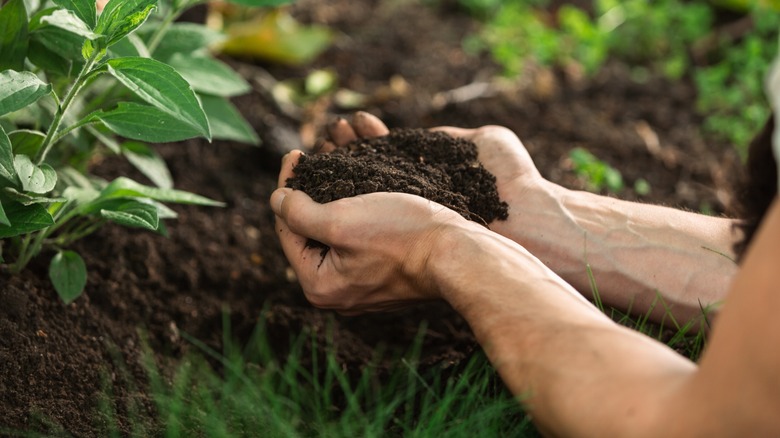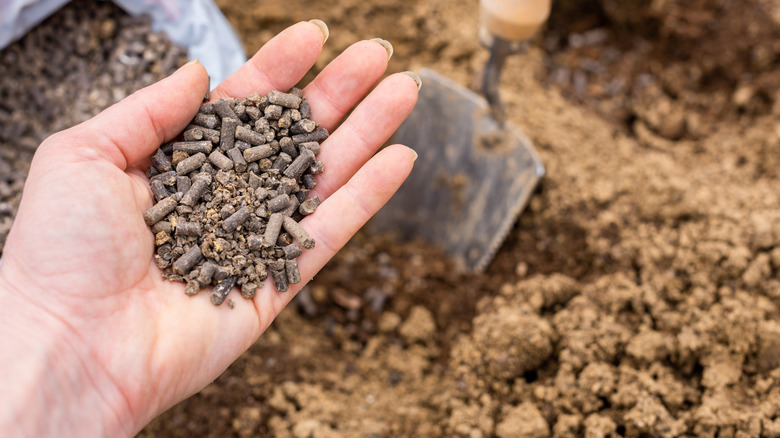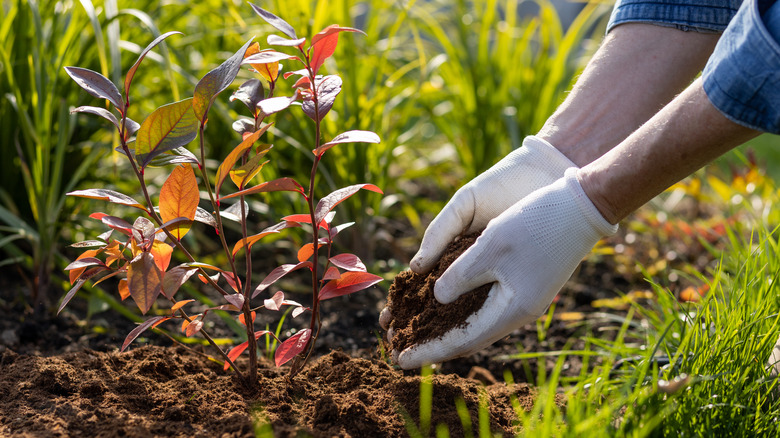The Fastest Way To Enrich Garden Soil With Phosphorus & Natural Alternatives
Phosphorus is one of the 17 essential nutrients that make up a healthy, balanced diet for your plants. It plays a role in nearly every vital function happening inside them, from photosynthesis to plant growth and development. If your plants aren't getting enough phosphorus, they may show symptoms like purplish or wrinkled leaves, weak stems, slowed growth, and fewer flowers or fruit.
The quickest way to treat a phosphorus deficiency is with a chemical fertilizer that contains a high percentage of phosphorus, the P in the NPK ratio found on most fertilizer packaging. Fertilizers release their nutrients quickly and in a form that's easy for plants to take up. But, the potent formulas can also cause problems if you use too much or add it to soil that doesn't need it. So, if your plants are showing signs of phosphorus deficiency, get your soil tested. Your local extension office can help you grow your garden by providing a detailed soil analysis. Then, either use fertilizers or a natural alternative like compost to improve the nutritional quality of your plant's soil.
Fastest way to increase phosphorus in soil
If you know that your soil is low in phosphorus because you've gotten it tested or used a DIY test to check soil health, your best and fastest solution is a synthetic fertilizer with a high percentage of phosphorus. A concentrated formula like this releases a high dose of the target nutrient to replenish the soil around plants quickly. However, it should only be used as a short-term treatment for known nutrient deficiency.
When you use too much fertilizer or add it to a soil that doesn't need it, you run the risk of hurting your plants. Most chemical fertilizers are made of highly soluble salts, so they can break down and be absorbed easily. But in excess, fertilizers can cause nutrient toxicity, and those soluble salts can pull water out of plants, causing dehydration. So, treat fertilizers like prescription medication. Use them as directed and only to treat a diagnosed problem.
Instead, using organic-based fertilizers like bone meal or fish emulsion and even burying bird feathers in your garden soil are all safer alternatives to synthetic fertilizers and less likely to cause these issues. Where synthetic fertilizers are absorbed almost immediately and can show results in as little as one to two weeks, organic fertilizers work a little more slowly. That slower release reduces the risk of nutrient toxicity. Organic fertilizers also don't contain the same high salt content that can dehydrate plants.
Boost phosphorus in soil naturally
Whether organic or synthetic, fertilizers are a short-term solution to a long-term problem. Over the long term, you should work on boosting phosphorus and other nutrients in your soil naturally. The best way to do that is by regularly adding organic matter, like compost or manure, to your soil. This adds nutrients and acts as a soil conditioner by improving soil moisture and aeration. Both of those are key to making the existing nutrients in soil easier for your plants to uptake.
At the start of the season, mix compost in with the soil when you're planting. Then, apply a 2- to 4-inch layer of organic mulch — like wood chips, leaves, grass clippings, or pine needles — around your plants. This adds more organic matter and helps regulate temperature and moisture in the soil below. Temperature and moisture can both impact the availability of phosphorus. Cold or dry conditions make it hard for plants to access phosphorus in the soil. As temperature and moisture levels rise, the phosphorus in the soil becomes more soluble, and plant roots can spread further to find it.
At the end of the season, you can compost this year's flowers and vegetable plants in place. Instead of ripping them out, chop them up and bury them right back in the garden beds. As the plant matter breaks down, all the nutrients your plants absorb over the growing season, phosphorus included, will return to the soil.


